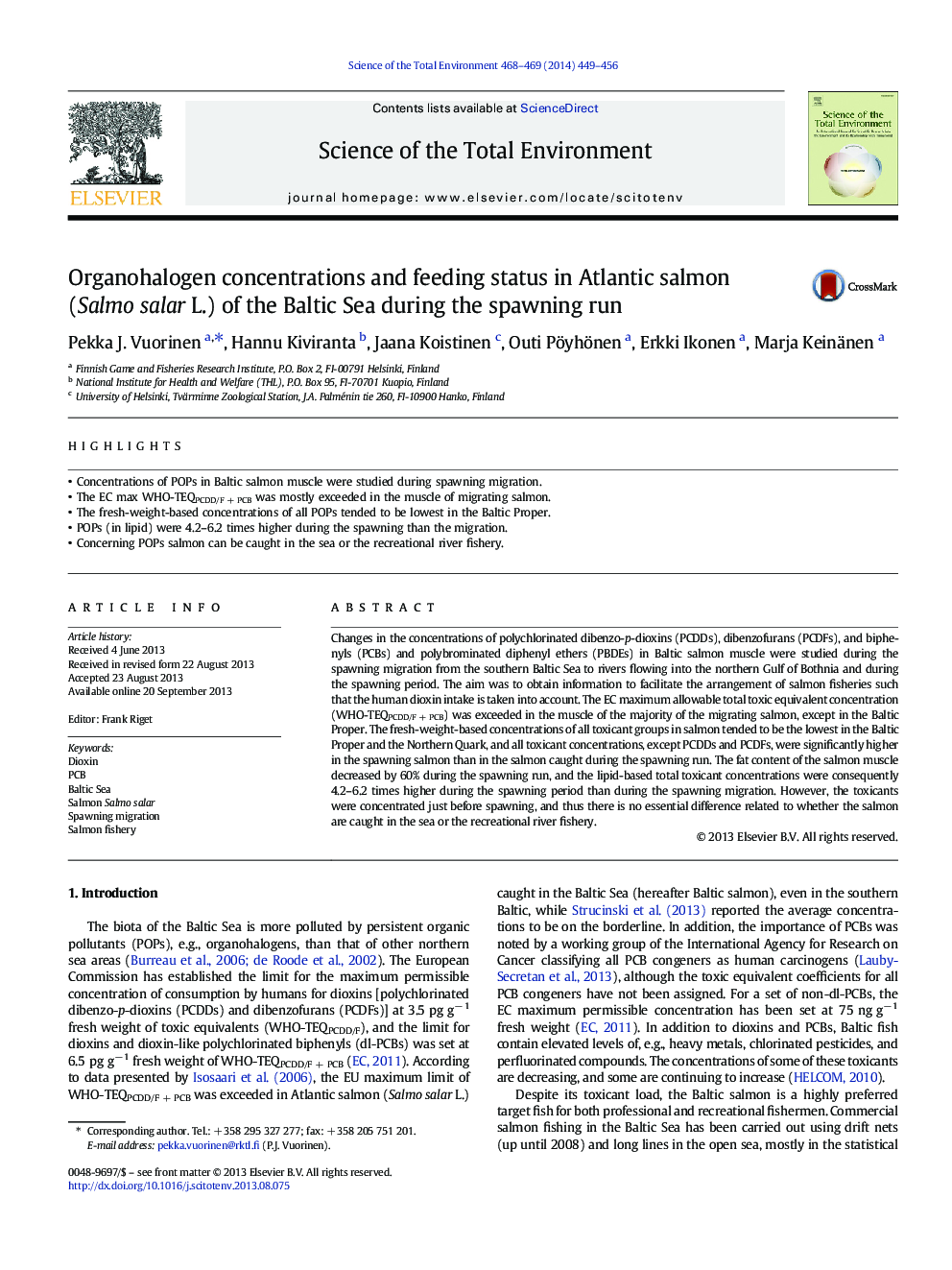| کد مقاله | کد نشریه | سال انتشار | مقاله انگلیسی | نسخه تمام متن |
|---|---|---|---|---|
| 6332510 | 1619794 | 2014 | 8 صفحه PDF | دانلود رایگان |
عنوان انگلیسی مقاله ISI
Organohalogen concentrations and feeding status in Atlantic salmon (Salmo salar L.) of the Baltic Sea during the spawning run
دانلود مقاله + سفارش ترجمه
دانلود مقاله ISI انگلیسی
رایگان برای ایرانیان
کلمات کلیدی
موضوعات مرتبط
علوم زیستی و بیوفناوری
علوم محیط زیست
شیمی زیست محیطی
پیش نمایش صفحه اول مقاله

چکیده انگلیسی
Changes in the concentrations of polychlorinated dibenzo-p-dioxins (PCDDs), dibenzofurans (PCDFs), and biphenyls (PCBs) and polybrominated diphenyl ethers (PBDEs) in Baltic salmon muscle were studied during the spawning migration from the southern Baltic Sea to rivers flowing into the northern Gulf of Bothnia and during the spawning period. The aim was to obtain information to facilitate the arrangement of salmon fisheries such that the human dioxin intake is taken into account. The EC maximum allowable total toxic equivalent concentration (WHO-TEQPCDD/FÂ +Â PCB) was exceeded in the muscle of the majority of the migrating salmon, except in the Baltic Proper. The fresh-weight-based concentrations of all toxicant groups in salmon tended to be the lowest in the Baltic Proper and the Northern Quark, and all toxicant concentrations, except PCDDs and PCDFs, were significantly higher in the spawning salmon than in the salmon caught during the spawning run. The fat content of the salmon muscle decreased by 60% during the spawning run, and the lipid-based total toxicant concentrations were consequently 4.2-6.2 times higher during the spawning period than during the spawning migration. However, the toxicants were concentrated just before spawning, and thus there is no essential difference related to whether the salmon are caught in the sea or the recreational river fishery.
ناشر
Database: Elsevier - ScienceDirect (ساینس دایرکت)
Journal: Science of The Total Environment - Volumes 468â469, 15 January 2014, Pages 449-456
Journal: Science of The Total Environment - Volumes 468â469, 15 January 2014, Pages 449-456
نویسندگان
Pekka J. Vuorinen, Hannu Kiviranta, Jaana Koistinen, Outi Pöyhönen, Erkki Ikonen, Marja Keinänen,